Camelot Developer Shares Plans for Affordable Housing Project at West Hartford Inn Site

Audio By Carbonatix
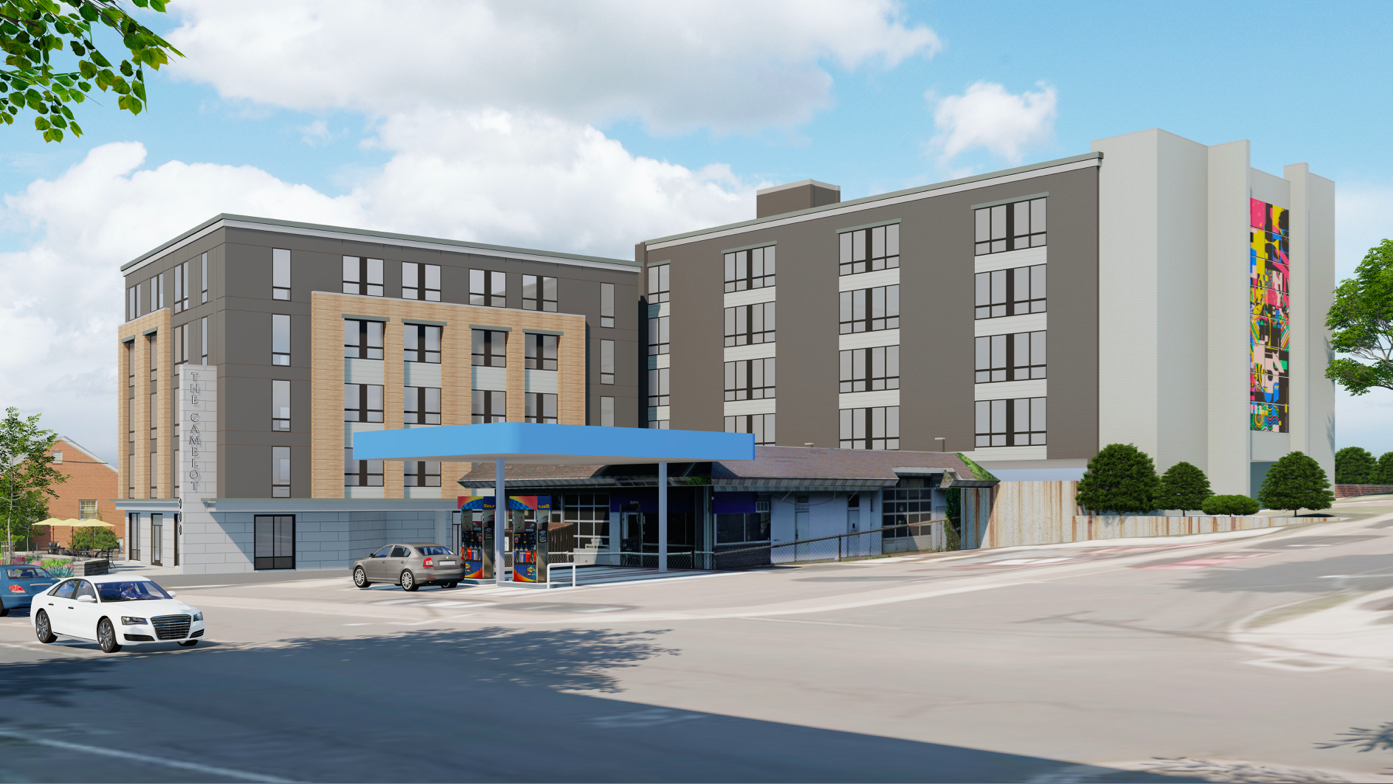
Rendering of The Camelot. Town of West Hartford website
Lt. Gov. Susan Bysiewicz, West Hartford Mayor Shari Cantor, state Sen. Derek Slap, and other officials announced Wednesday that a $998,000 brownfield grant will fund clean-up of the 900-904 Farmington Avenue site and help move the project forward.
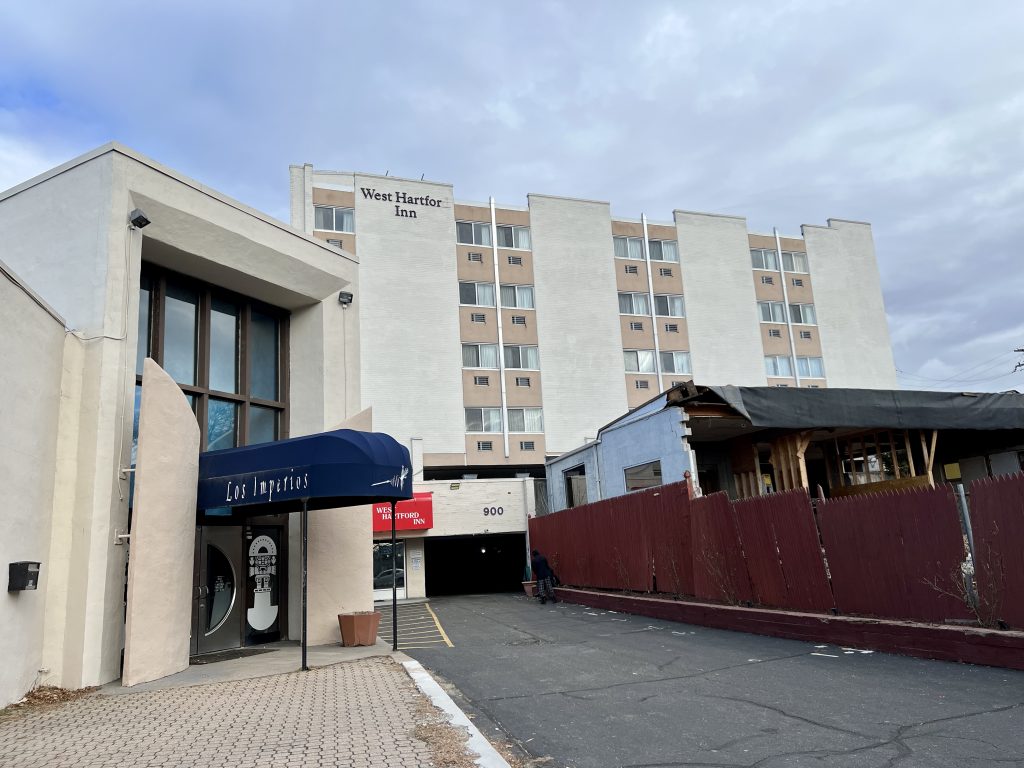
900-904 Farmington Avenue will be redeveloped as The Camelot. Photo credit: Ronni Newton
By Ronni Newton
Hundreds of units of housing have been approved or are now under development throughout West Hartford, including in or near the Center, but the project about to commence on Farmington Avenue just east of Trout Brook Drive is remarkably different in significant ways – including that 90% of the 44 planned units will be affordable at various levels of income eligibility.
Developer Lewis Brown, the founding member and managing principal of Honeycomb Real Estate Partners, is a principal of WHI Camelot LLC, which is purchasing the 900-904 Farmington Avenue properties and together with his partners will redevelop the West Hartford Inn and former Los Imperios restaurant spaces into The Camelot, a mix of one- and two-bedroom affordable apartments. Brown and Steve Caprio, Honeycomb’s Director of Development, are partnering with other local developers – Corridor Ventures, Vesta Corporation, and Joseph Vallone of Vallone Ventures – to transform what Lt. Gov. Susan Bysiewicz referred to as an “eyesore in a really great place in West Hartford” during a Wednesday morning press conference – into much-needed residences for people at a variety of income levels.
“The demand for affordable housing is exponential and what we’re trying to do is provide high quality places for people to live in desirable areas,” Brown told We-Ha.com in an interview Wednesday afternoon. The West Hartford Inn property is an ideal site.
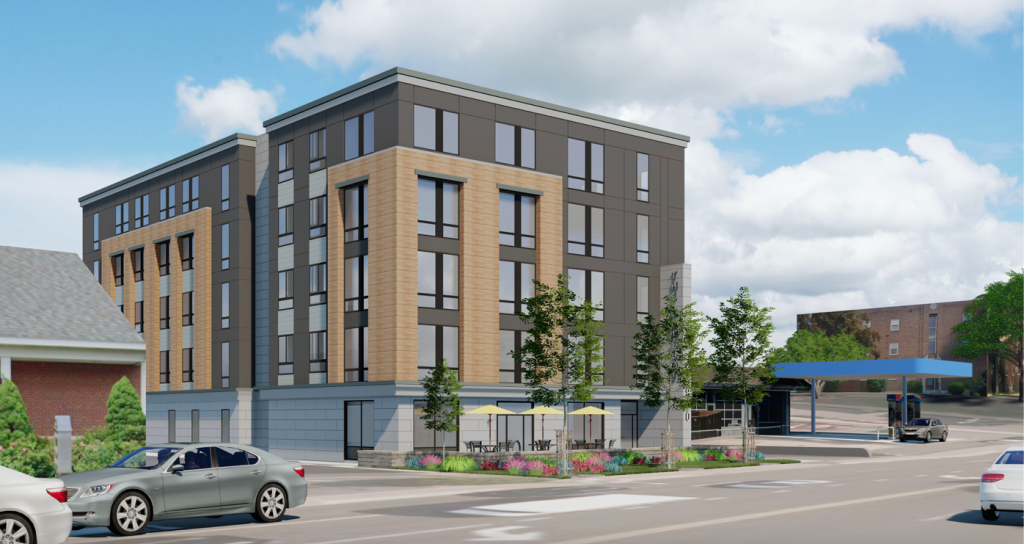
Rendering of The Camelot. Town of West Hartford website
What will the development look like?
“Ninety percent of the units are affordable to 80% AMI or below. Ten percent – four units – are unrestricted,” Brown said. At 90% affordable that’s an even greater percentage than originally stated for the project. Some of the units will be reserved for those earning 30% of the AMI, and others will be for those at 50% of AMI.
“AMI” refers to “area mean income” as defined by the U.S. Department of Housing and Urban Development, and is a metric used to calculate affordability of monthly rent and eligibility for assisted housing programs.
According to the most recent data produced by the Connecticut Housing Finance Authority (CFHA), 80% AMI translates to an annual salary of $63,120 for one person, $72,160 for two people, $81,200 for three people, and $90,160 for a household of four people, while 60% AMI for one person is currently $47,340.
The Camelot will have two wings – one of which will be brand new. The six-story West Hartford Inn – which includes 56 ground-level covered parking spaces that will be renovated but will remain – will be gutted and the existing 52 hotel rooms will be transformed into 24 apartments. The restaurant building will be demolished and replaced with a five-story building that includes 20 apartments.
The 24 apartments in the renovated building will include 20 one-bedroom units and four two-bedroom units. The 20 apartments in the new portion of the project will all be two-bedroom units, and that building will include community space and amenities on the ground floor. Housing doesn’t address all issues, Brown said, and the community space will give residents access to important resources such as computers and other technology.
“There will be a mix of income profiles within the housing,” Brown said. “Communities do better when you have a diverse group of people living, working, and interacting with each other.”
Of the one-bedroom units, the plan is for five at 30% AMI, two at 50% AMI, 11 at 80% AMI, and two at market rate. For the two-bedroom units, 10 will be at 30% AMI, 12 will be at 80% AMI, and two will be at market rate.
“The Town of West Hartford is excited about the potential for having affordable housing so close to the Center and Blue Back Square, providing residents with access to a vibrant part of town and access to transportation,” Town Manager Rick Ledwith said when the project was first proposed, noting the positive impact of the project overall on the town’s economic development.
Most recent proposals are brought to the Town Council as applications for Special Development Districts due to requested zoning variances, and there is a somewhat lengthy process to gain approval. This project – which is located in an RM-1 zone and was submitted under the state’s 8-30g regulations – requires just site plan approval, that has now been granted. According to Town Planner Todd Dumais, it’s the first 8-30g application that has been submitted in West Hartford in decades.
West Hartford’s Design Review Advisory has recommended the project after receiving a formal referral on Jan. 12. That followed three prior study sessions in November and December.
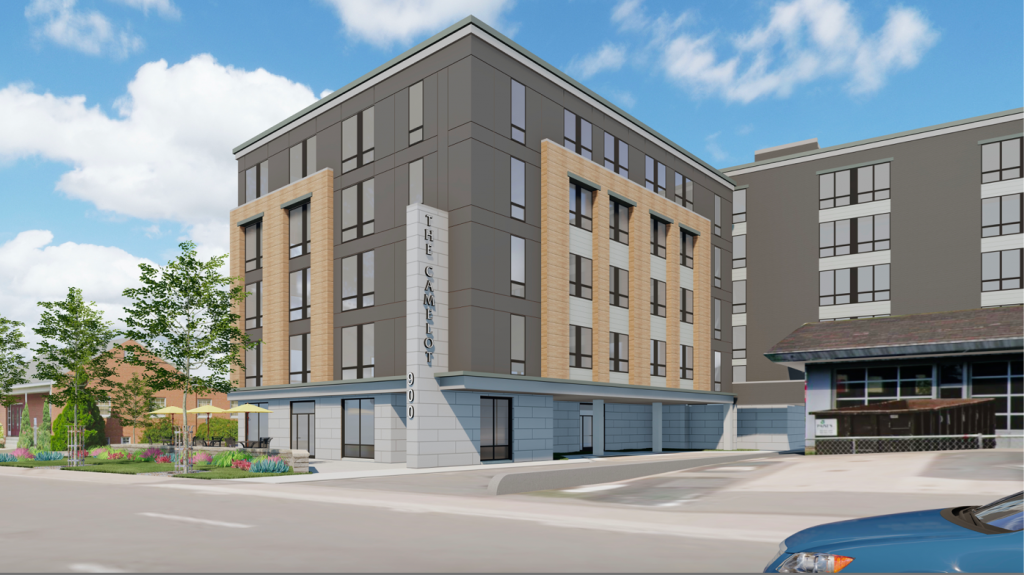
Rendering of The Camelot. Town of West Hartford website
Why affordable housing, and why in West Hartford?
“This is all I do,” Brown said. And his background, he said, has led him to pivot his career in a direction that will make a critical impact on communities.
“My business plan can be summed up in one word: relationships,” Brown said. Putting together a deal that will allow an affordable housing development to move forward is very complicated – with a multi-layered capital stack – and relies heavily on partnerships and collaboration, which in turn rely on “deep relationships,” he said, including close collaboration with the town.
Brown, whose father was a psychologist and whose mother has been teaching at Watkinson School for decades, grew up in West Hartford. He and his brother, Hagan (co-founder and managing principal of Corridor Ventures, and an investor in many other West Hartford properties) graduated from Hall High School.
Before forming Honeycomb – which was officially launched in 2022 – Brown spent more than 16 years working at Vesta, which develops affordable housing and senior communities throughout the country. But prior to that, after graduating from the University of Michigan, he taught at a therapeutic school in Boston, he helped students get jobs in the community, he earned a law degree at Suffolk University, and one summer his internship involved work with the juvenile justice system. He served as assistant corporation counsel for the City of Boston, and was involved with public-private partnerships.
When his father died in 2005, Brown and his wife, Miki, moved back to West Hartford. One of their children is now a senior at Hall and the other has graduated from Hall and is a sophomore in college.
“I liked practicing law, but I was never really passionate about practicing law,” Brown said. He talked himself into a job working as an analyst at Vesta in the summer of 2005, and ultimately led their development team.
The COVID pandemic allowed him some “headspace,” Brown said, to think about the future, and with his wife’s support, decided to launch Honeycomb. Along with a variety of partners, Honeycomb is also developing 64 units of affordable housing in New Haven and a 40-unit complex of colonial-style apartments on property in Chester that they purchased from a church diocese.
Where did the name “Honeycomb” come from? Brown said there’s a lot of symbolism, including a honeycomb’s hexagonal shape, the association of honey with the sweetness of the Jewish New Year, and the fact that his mom always called his dad “honey.”
How Honeycomb came to be involved with the West Hartford Inn property was, perhaps, kismet.
Brown said he was already working on the New Haven development when Joe Vallone – an architect by trade but now a developer whose projects include Loom City Lofts in Vernon – asked if he was familiar with the West Hartford Inn and former restaurant property on Farmington Avenue.
“Do I know it? My brother and I had our birthday parties there,” was Brown’s response to Vallone. At one point the restaurant space was Pancho McGee’s, where he and his brother celebrated their birthdays.
“I’d always driven by and thought it was an opportunity,” Brown said.
“We looked at other strategies initially,” he said of the property, including a boutique hotel as well as market-rate housing. Last May, however, the strategy became clear – to put together a plan to bring affordable housing to West Hartford Center, at a property that is accessible to transit and walkable to a wide variety of amenities.
The existing structures on the 0.67-acre property at 900-904 Farmington Avenue were constructed in 1967 according to town records, and include a five-story hotel building with 22,142 square feet above ground as well as a parking garage, and a 7,146 square foot restaurant building. While the West Hartford Inn is still in operation according to its website, the property has not been well-maintained, at least on the exterior.
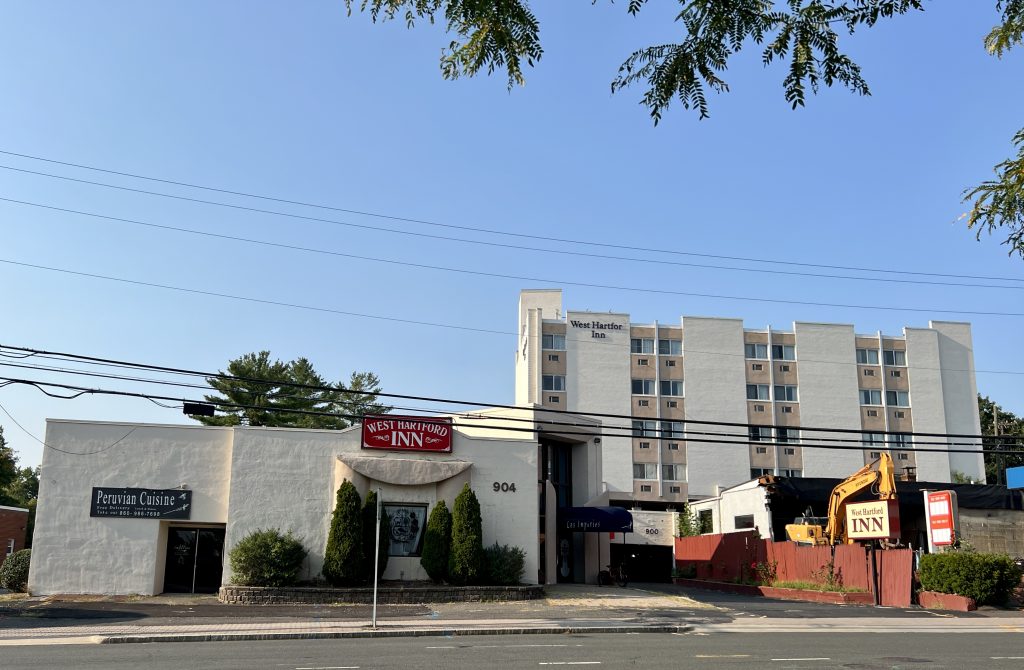
900-904 Farmington Avenue in September 2022. Photo credit: Ronni Newton (we-ha.com file photo)
The most recent restaurant associated with the property, Los Imperios, was the scene of signifiant police activity and cited for multiple zoning and other infractions. The business lost its liquor license in late 2017 following a remonstrance hearing, closed for good shortly thereafter and has remained vacant. In addition to Pancho McGee’s in the 1980s, other establishments that had been in that space include Manga Reva, House of Zodiac, Fiorello’s, and Shish Lounge.
The original name of the hotel, and the restaurant: Camelot.
Stamped on the original architectural drawings from the mid-1960s was the name “The Camelot Motor Hotel,” and the photograph below, which is part of the Noah Webster House & West Hartford Historical Society archives, shows the “Camelot” name on the exterior of the restaurant building.
Camelot was a common name in the era of Kennedys, and using that name for the development is a nod to the property’s history and the early days of the civil rights movement, Brown said.
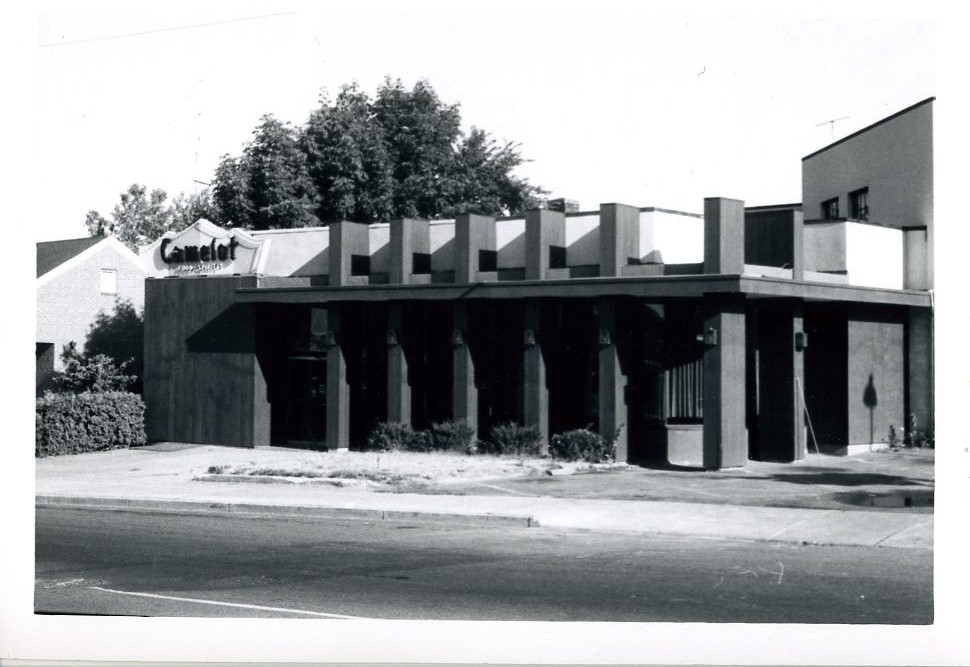
The Camelot in the 1960s. Courtesy of Noah Webster House & West Hartford Historical Society
Financing
“To get these deals to pencil out it takes a village,” Brown said.
The process of developing housing that is mostly affordable is a complicated one – involving multiple pieces falling into place. There is required remediation of environmental hazards on this particular site – where prior to construction of the West Hartford Inn there was a gas station, separate from the gas station that is being renovated on the adjacent property at 898 Farmington Avenue. Financing is key to making an affordable housing project economically feasible since the future rents can’t be set at a level sufficient to offset the development costs.
The capital stack, Brown said, will likely include the Connecticut Housing Finance Authority (CHFA), tax exempt bonds, an LP equity investor in tax credits with a specific interest and expertise in affordable housing, the state’s Department of Housing, other soft loans, and also what’s known as a deferred developer fee. The $998,000 brownfield grant from the state is also a key element of the financing, and hopefully, he said, other “soft sources” will also be available.
In December 2022, the West Hartford Town Council unanimously voted to make $6 million in ARPA funds available as grants or loans to support affordable housing, which they said would make a critical impact in the feasibility of developing the Camelot as well as other affordable housing in the future. “The town’s designation of a portion of their unused ARPA funds to support affordable housing is an important step to helping solve or create new affordable housing,” Brown told We-Ha.com previously, noting that “as a developer of affordable housing, Honeycomb can apply to participate in the use of these funds.”
Timeline and Brownfield grant
Brown said financing applications for The Camelot were submitted last week, and the goal will be to close sometime this summer. Construction should take between 12 and 15 months, he said.
The first step will be the remediation.
The town, through the Connecticut Department of Economic and Community Development’s Municipal Brownfield Grant Program, recently received approval for $998,000 to assist with the remediation and environmental rehabilitation of the site.
“The state’s continued support of brownfield remediation and redevelopment is an incredible economic tool for addressing contaminated sites that would otherwise go overlooked,” West Hartford Economic Development Coordinator Kristen Gorski said in December when the town’s application for the grant was approved. The state’s program requires the application to be made by a municipality or development authority looking to generate significant economic impact, and then is passed along to the developer.
“We’re thrilled to be chosen to receive such a substantial award to support the investigation and cleanup of 900 Farmington Avenue, which is a crucial component to facilitating WHI Camelot’s redevelopment of this key property,” Gorski said.
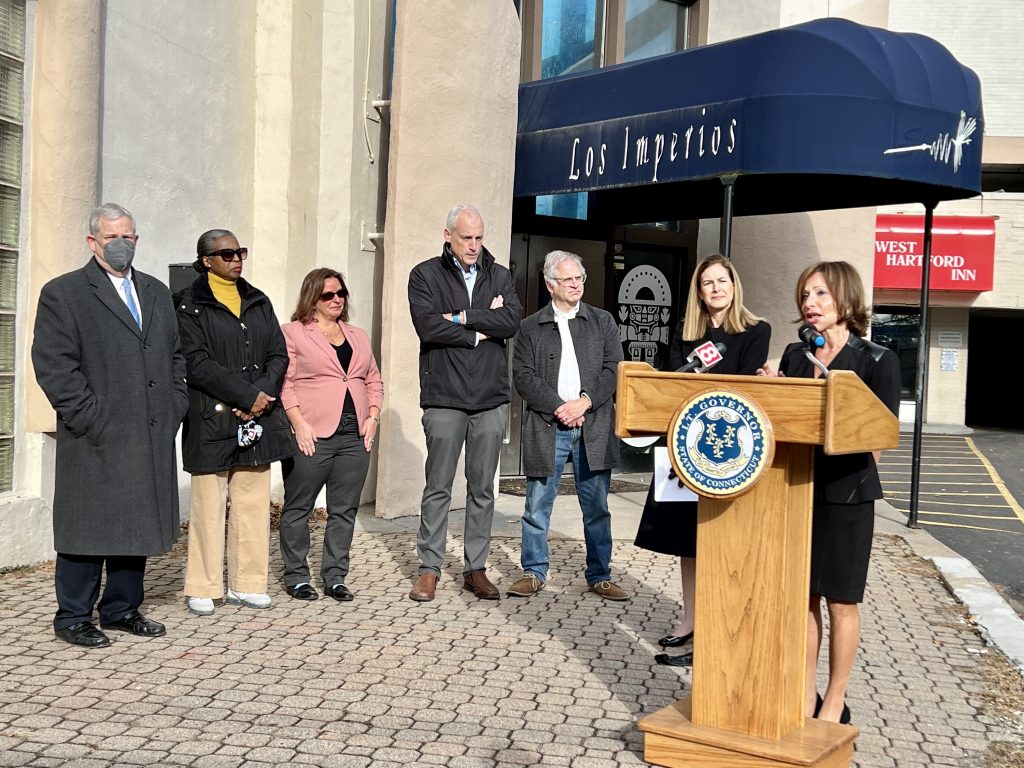
Mayor Shari Cantor (right), Lt. Gov. Susan Bysiewicz (second from right), state Sen. Derek Slap, and members of the Town Council outside the West Harford Inn property speak about the brownfield grant that will help make The Camelot development of affordable housing feasible. Photo credit: Ronni Newton
Lt. Gov. Susan Bysiewicz, Mayor Shari Cantor, state Sen. Derek Slap, and other local officials on Wednesday morning touted the benefit of the brownfield grant – part of a $24.6 million overall approved by the state in December to help with assessing and remediating 41 blighted parcels in 16 municipalities across the state.
“That money is taking blighted, abandoned properties like this and putting it back on the tax rolls,” Bysiewicz said. There are many projects, she said, there are reasons this one rose to the top of the list.
“This project involves the creation of more affordable housing which is a priority for our administration,” Bysiewicz said. More than 60,000 new families moving to the state during COVID became a factor in a housing shortage, and there has been an increase in rents and the price of homes, “making affordable housing even more important, and if we want our state to grow, if we want to grow jobs, if we want to keep our young people and our seniors here in our state, then we have to create more affordable housing, especially as we hope to attract more people to our state to help take the 100,000 jobs that are open.”
Also, Bysiewicz said, this project will “help enhance the walkability and the vibrancy that West Hartford already has.”
“We could not have pulled this project together without this brownfield grant,” Cantor said Wednesday. “Because when you are doing an affordable housing project, the pieces are very, very fragile because the profit … is very narrow. So this is very important.”
This particular project is in a strategic location, Cantor said. “We do have a lot of projects coming into the Center. Most of them are market rate,” she said, while there may be a portion set aside for affordability those are at 80% AMI. “This particular project will reach much deeper and allow people that are at 30% of AMI, 50%, 60% to be able to afford to live within walking distance of West Hartford Center, walking distance or on a bus fare that leads right into our capital city, provides immense opportunity to jobs, walking distance to a grocery store … so it really allows incredible quality of life for people who otherwise could not afford to live in this particular area which is so desirable.”
There is a housing shortage in West Hartford, Cantor noted, with only 21 houses on the market as of Wednesday morning where a normal level would be 200. Rents have gone up, and there is immense pressure on many to find an affordable place to live, she said. “This doesn’t solve all of our problems, but this is a really strategic and important part of the plan.”
Cantor thanked her colleagues on the Town Council, the legislative delegation, Economic Development Coordinator Kristen Gorski, and Town Manager Rick Ledwith for their support of the project, and WHI Camelot for their investment in the town. “We’re really excited to get the shovel in the ground and make this happen.”
Slap said he has driven by the West Hartford Inn property hundreds or thousand of times, and thought that it is not living up to its potential. “And now we have an answer,” he said, thanks to all working together.
“If you care about walkability, this is a great project. If you care about attracting and retaining young people and growing our economy, this is a great project. If you care about public safety, because you know parts of this property have been an issue … this is a great project. If you care about holding the line on property taxes, this is a great project,” Slap said. “It’s all positive and it’s really because of the way that state government, local government, we’ve been able to work together.”
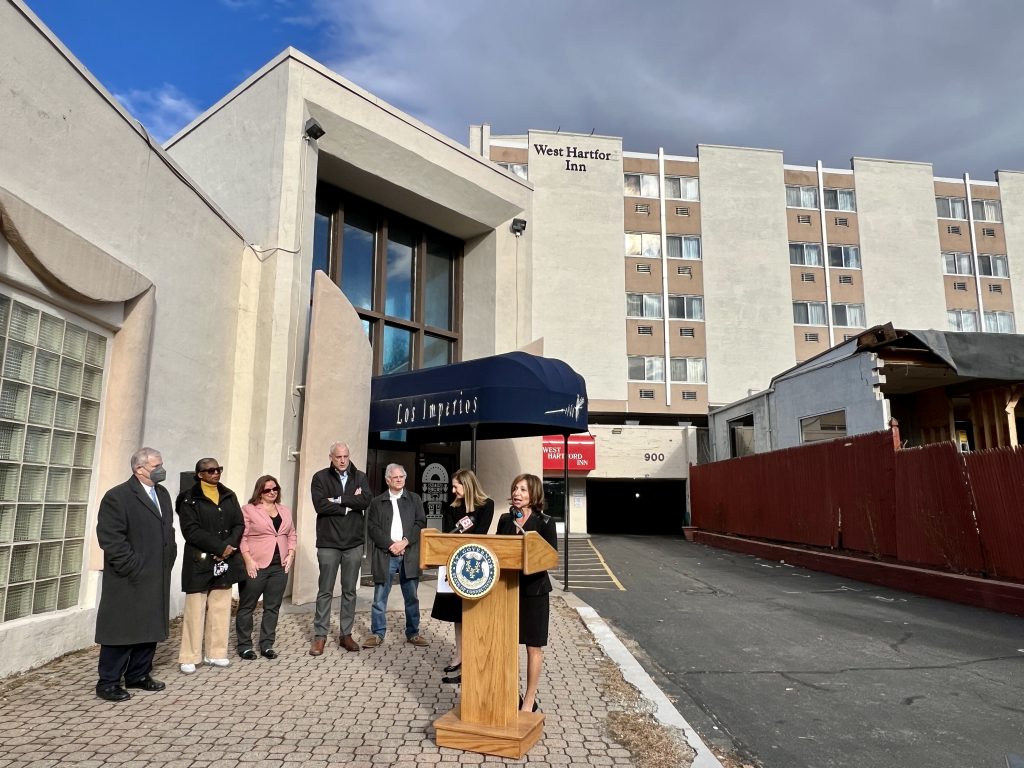
Mayor Shari Cantor (right), Lt. Gov. Susan Bysiewicz (second from right), state Sen. Derek Slap, and members of the Town Council outside the West Harford Inn property speak about the brownfield grant that will help make The Camelot development of affordable housing feasible. Photo credit: Ronni Newton
Housing development in West Hartford
West Hartford’s 2020-2030 Plan of Conservation and Development recommends increasing the availability of affordable housing – which currently totals 7.8% of the town’s housing stock. To reach 10%, which is the goal of the town as well as the state, an additional 600 affordable housing units must be created.
While most of the new multifamily or mixed-use developments in West Hartford have included an affordable component, it’s hard to make a true dent in the total needed. The most recent projects approved by the Council include the Continental Properties development of the former Children’s Museum property at 950 Trout Brook Drive, which has nine of 172 units designated at 80% of the area mean income (AMI) for 20 years); the Byline, in the early stages of construction at 920-924 Farmington Avenue (two of 48 units designated at 80% AMI for 20 years); and One Park Road, currently under construction at the corner of Park Road and Prospect Avenue (10% of the 292 units designated at 80% AMI for 20 years).
The Arapahoe Group project, approved by the Town Council in December, will bring 83 residential units of infill development in West Hartford Center, a mixture of condominiums and rental units. Four of the 25 apartments will be 40-year deed-restricted for residents at 80% AMI.
The 540 New Park mixed use development, nearly completed at 540 New Park Avenue, has 41 of its 52 designated for those who earn no more than 60% of the AMI. The transit-oriented development is a project being developed by Trout Brook Reality, and will be managed by the West Hartford Housing Authority.
West Hartford Fellowship Housing plans to add 95 additional units of affordable housing for the elderly and people with disabilities as part of a multi-phased renovation of the Bishops Corner property.
Several additional projects will soon be submitted to he Town Council, including a development for the former UConn campus, but the number of units of housing and affordability mix for those projects has not yet been determined.
Going forward
“The hope is that this quality project will be a beacon for other developers,” Cantor said Wednesday, and provide a balance of choices for residents of the community.
“We hope that communities all over the state take a look at places like West Hartford because there is public transportation … and the state has supported project like this one, projects near the busway and other public transportation routes because we want to support the building of more affordable housing,” mixed with market rate housing, Bysiewicz said.
The complicated process of developing affordable housing can be a barrier to entry for many, but Brown, who believes strongly in the partnerships and relationships he creates, doesn’t think that’s a reason not to do it.
The risks of developing affordable housing are compounded – and include the inability to pass on ever-rising fixed costs like property insurance to renters due to regulatory requirements.
“I’m not afraid because I think it’s the right thing to do, and it’s in line with my moral compass.”
Quoting a line that Hamilton said to Burr in the Lin-Manuel Miranda musical, he said, “If you stand for nothing, what will you fall for?”
As for what comes after The Camelot, Brown said, “If this goes well I would certainly like to do more.”
Like what you see here? Click here to subscribe to We-Ha’s newsletter so you’ll always be in the know about what’s happening in West Hartford! Click the blue button below to become a supporter of We-Ha.com and our efforts to continue producing quality journalism.


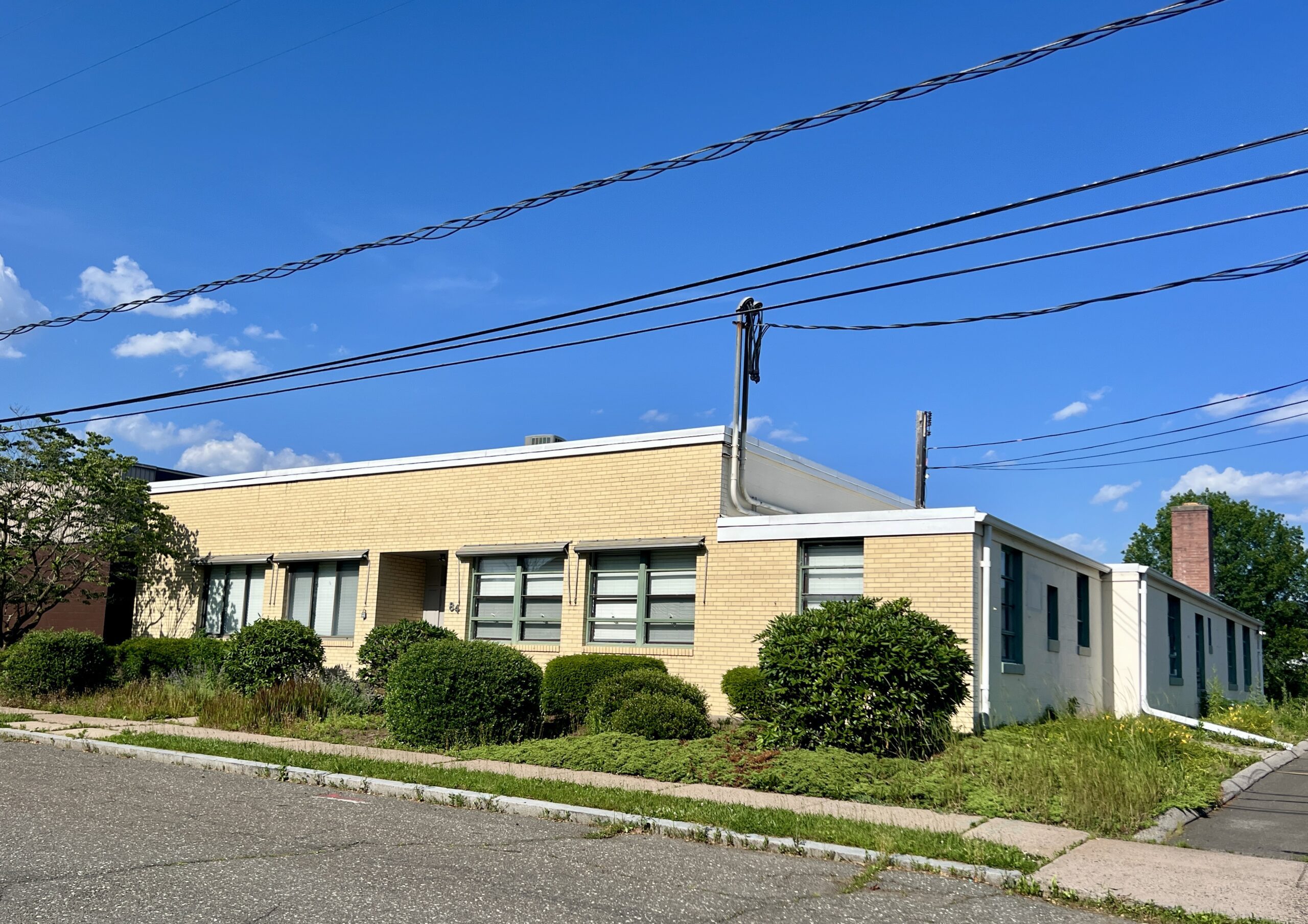
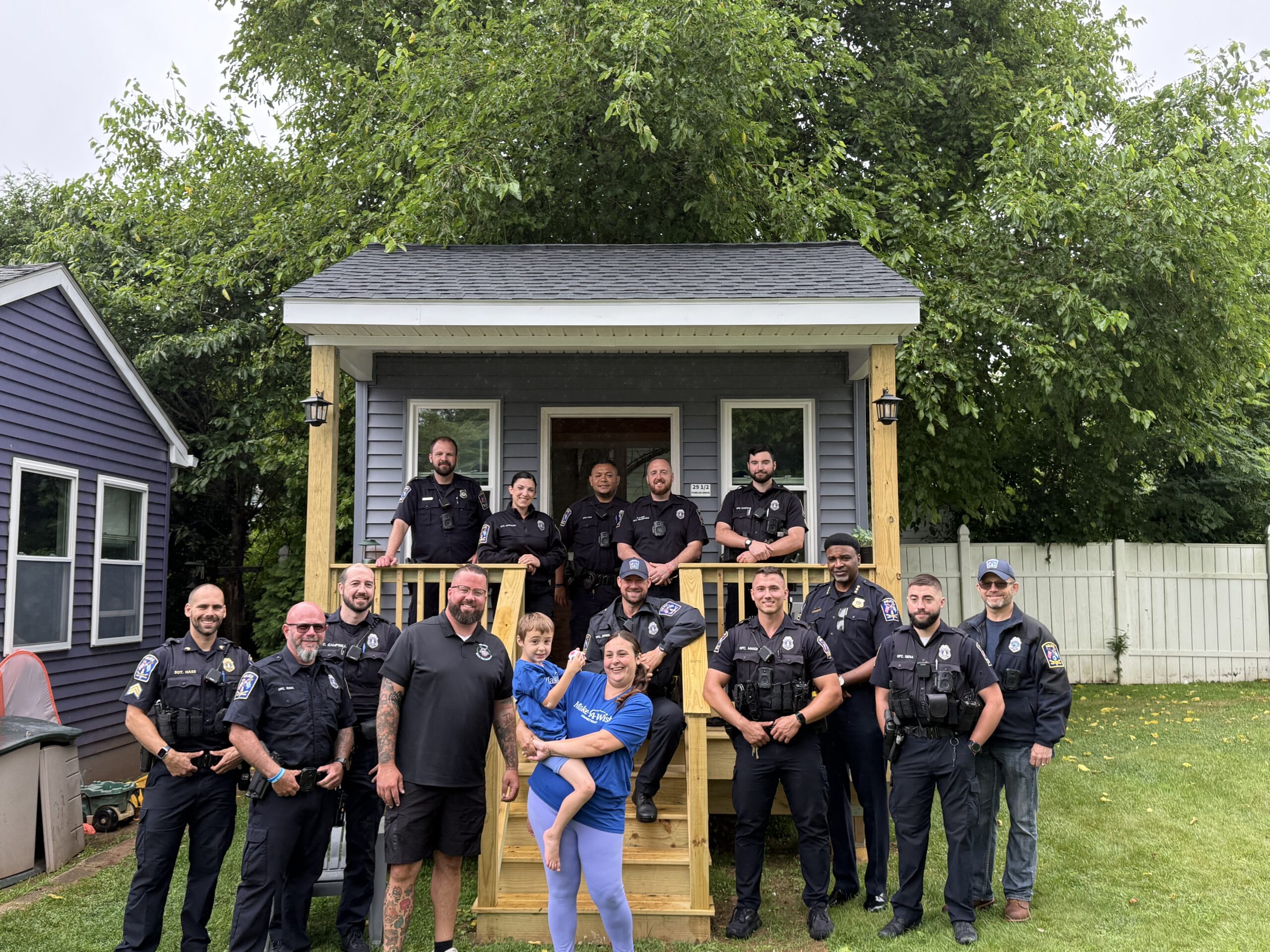
I am interested in a unit being converted
From West Hartford Motor Inn
Please contact me assp